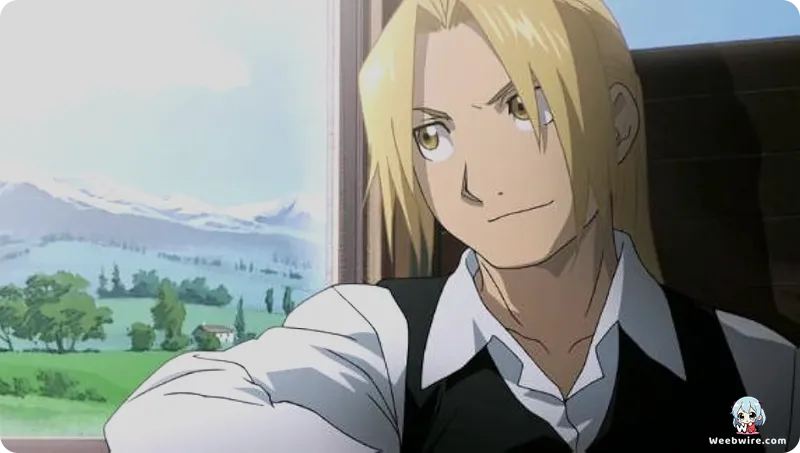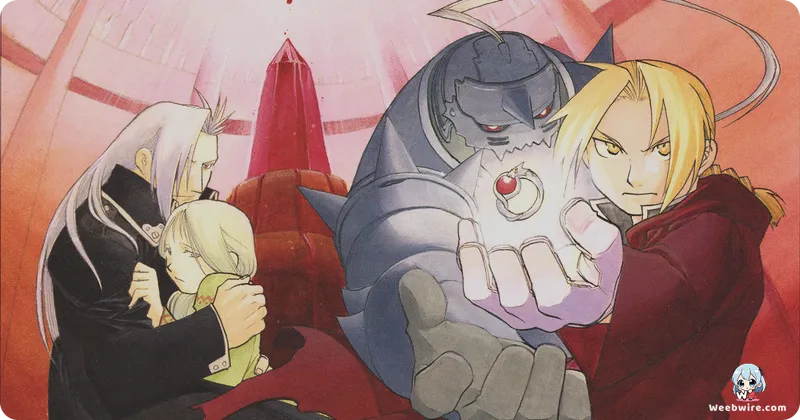Unveiling the Hidden Alchemy: Deepening Your Appreciation for Fullmetal Alchemist: Brotherhood's Enduring Legacy
While anime fans often marvel at sprawling narratives and stunning animation, the true magic frequently lies in the intricate details hidden beneath the surface – the pivotal behind-the-scenes choices, the subtle nuances defining characters, or the captivating trivia that enriches a beloved series. For aficionados of Fullmetal Alchemist: Brotherhood, widely acclaimed as a modern masterpiece, a wealth of such insights exists, deepening appreciation for its meticulous artistry and profound storytelling. Renowned for its unwavering fidelity to Hiromu Arakawa’s original manga, the series, along with its illuminating OVAs (Original Video Animations), offers delightful glimpses into its complex universe and beloved characters, extending far beyond the core plot. These hidden gems are what truly elevate a good anime to a timeless classic, inviting re-watches and deeper contemplation.

The Genesis of a Masterpiece: Unwavering Fidelity
A cornerstone fact about Fullmetal Alchemist: Brotherhood is its very inception: it was meticulously crafted to deliver the complete manga narrative as envisioned by Hiromu Arakawa herself. Unlike the earlier 2003 Fullmetal Alchemist anime, which, despite its merits, diverged significantly due to the manga's ongoing serialization, studio Bones embarked on Brotherhood with an explicit mission of absolute faithfulness. This commitment garnered immense praise from Arakawa, whose direct involvement ensured that every intricate plot twist, character arc, and thematic nuance was captured precisely as she intended. Her collaboration extended beyond mere supervision; she reportedly provided detailed sketches and personal anecdotes, guaranteeing even the smallest elements, from machinery designs to character expressions, aligned perfectly with her artistic vision. This unparalleled dedication underscores Bones' profound respect for the source material, creating an environment where every frame was a deliberate brushstroke, a testament to their commitment to the fans and the original creator.
Beyond the Plot: Character Insights
Beyond its production genesis, Fullmetal Alchemist: Brotherhood is brimming with compelling character trivia that adds layers to its already multifaceted cast. Consider the protagonist, Edward Elric. Despite his formidable presence and alchemical prowess, Edward grapples with a fierce height complex, often reacting explosively and comically to any mention of his stature. This seemingly minor detail brilliantly humanizes the “Fullmetal Alchemist,” revealing a vulnerable teenager beneath the powerful state alchemist, burdened by immense responsibility and trauma. His journey transcends merely restoring his brother Alphonse’s body; it's a profound odyssey of personal and emotional growth, marked by both triumphs and heart-wrenching setbacks. Alphonse, ironically, despite being a soul tethered to a towering suit of armor, frequently demonstrates greater emotional maturity and compassion, serving as a gentle counterpoint to Edward's fiery disposition. This dynamic provides both humorous relief and poignant introspection throughout the series, highlighting the unbreakable bond between the brothers.
The Enigmatic Homunculi
The Homunculi, the series’ formidable antagonists, are another wellspring of intriguing facts. Each is named after one of the seven deadly sins, with their personalities, appearances, and powers meticulously designed to embody their respective sin. Greed’s insatiable desire for power is evident, while Pride’s disdainful nature perfectly reflects his sin. However, one Homunculus presents a surprising deviation: Führer King Bradley, who embodies Wrath. Unlike his counterparts, Bradley exhibits signs of aging and possesses human characteristics. This unique aspect hints at his origins and his complex relationship with Father, elevating him beyond a simple embodiment of evil to a nuanced and unsettling antagonist. He stands alone as the only Homunculus originally human, transformed through Father's horrific experimentation, a detail that amplifies the moral ambiguity permeating the series and challenges viewers to reconsider the nature of villainy.

The World of Amestris: Philosophy and Metaphor
The world of Amestris itself is rich with fascinating details. The elaborate principles of alchemy, particularly the Law of Equivalent Exchange, are not mere magical rules but profound philosophical tenets. The concept that “to obtain something, something of equal value must be lost” resonates throughout, explored not only through alchemical transmutation but also through the characters' sacrifices, errors, and the far-reaching consequences of their actions. This principle serves as a constant reminder of balance and consequence. The Gate of Truth, a mystical entity demanding a price for forbidden alchemy, is another deeply profound concept. The “truth” revealed to those attempting human transmutation often involves horrifying visions and the forfeiture of a part of themselves – be it limbs or memories – underscoring the irreversible nature of their transgression. This element elevates alchemy from a simple power system to a powerful metaphor for life’s undeniable balance and the severe cost of hubris, making the series resonate on a much deeper, intellectual level.
Expanding the Universe: The OVA Collection
While the main series delivered a complete narrative, the Fullmetal Alchemist: Brotherhood OVA Collection offered delightful supplementary content, expanding character exploration and world-building without disrupting the primary storyline. These OVAs are particularly noteworthy as they aren’t essential for plot comprehension but significantly enrich the viewer’s experience, providing valuable context and emotional depth. For instance, “The Blind Alchemist” delves into a tragic backstory involving unethical alchemical research, exposing the darker, morally ambiguous facets of the discipline hinted at in the main series and showcasing the dangers of unchecked scientific ambition. “Simple People” provides a heartwarming, light-hearted glimpse into the Elric brothers' childhood in Risembool, offering a nostalgic peek into their early lives before tragedy struck, reinforcing their unbreakable familial bonds and the innocence they once shared.
Crucial Backstories: Teacher and Battlefield
Perhaps the most impactful OVAs are “The Tale of Teacher” and “Yet Another Man's Battlefield.” “The Tale of Teacher” focuses on Izumi Curtis, the Elric brothers' formidable alchemy mentor. This OVA chronicles her grueling training in the northern wilderness, showcasing her incredible resilience, unwavering determination, and the physical and mental hardships endured to master her craft. It not only elucidates her exceptional combat skills but also deepens our understanding of her tough-love teaching style and her profound influence on Edward and Alphonse, revealing the source of her formidable strength and wisdom. Meanwhile, “Yet Another Man's Battlefield” is a poignant prequel featuring Roy Mustang and Maes Hughes during the grim Ishvalan Civil War. This OVA is critically significant as it highlights the camaraderie between the two men, their shared ideals, and the harrowing experiences that forged them into the characters we know. It delves into the moral complexities of war and its personal tolls, providing crucial context for Mustang's later ambitions and Hughes's unwavering loyalty. These OVAs collectively showcase the immense richness of the Fullmetal Alchemist universe, proving that even seemingly minor characters or off-screen events hold substantial weight and compelling backstories, making the world feel truly alive.
A Timeless Classic
Fullmetal Alchemist: Brotherhood’s enduring popularity stems not merely from its faithful adaptation or compelling plot; it’s a testament to the intricate details, profound themes, and exceptionally realized characters that make it endlessly re-watchable. These invaluable insights, from the meticulous production process guided by the author herself to the subtle complexities woven into its characters and world, illustrate why the series continues to resonate deeply with fans globally. It’s a universe where every element, no matter how minute, contributes to a grand tapestry of adventure, drama, and philosophical inquiry, leaving viewers with much to ponder long after the final credits roll. It’s a series that richly rewards close attention, revealing new layers with each viewing, firmly cementing its status as a timeless classic in the anime landscape.
Credits
Fullmetal Alchemist: Brotherhood
Author
Hiromu Arakawa
Cover Art
Hiromu Arakawa
Studio
Bones
Publisher
Square Enix
Producers





